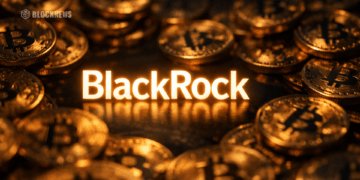- Decentralized finance (DeFi) protocol Curve Finance has launched its stablecoin called crvUSD on the Ethereum mainnet.
- The crvUSD token is overcollateralized, backed by crypto assets, and has a novel lending-liquidating algorithm called LLAMA that rebalances users’ collateral as crypto prices fluctuate.
- The crvUSD stablecoin won’t be accessible to the public until it’s integrated into Curve’s user interface, and it will face competition from rival DeFi protocols that are developing their stablecoins.
Curve Finance, a DeFi protocol, launched its highly anticipated native stablecoin crvUSD on the Ethereum mainnet Wednesday afternoon.
According to blockchain data on Etherscan, the contract minted a total of $20 million in crvUSD tokens in five transactions in five minutes. Following the issuance of the first tokens, a blockchain intelligence firm Arkham Intelligence’s Curve.Fi Team created a $1 million crvUSD loan using $1.8 million of frxETH, a type of ether (ETH) derivative token issued by DeFi protocol Frax Finance.
Curve confirmed the deployment later that afternoon on Twitter.
According to CoinDesk data, the protocol’s governance token, CRV, has risen to 97 cents on the news and is up 7% for the day.
The deployment is a significant step toward bringing Curve’s long-awaited stablecoin to the public. Curve, one of the largest decentralized marketplaces specializing in stablecoins, announced last year that it had begun developing its dollar-pegged stablecoin.
Curve’s stablecoin will face stiff competition as a slew of rival DeFi protocols issue or are in the process of issuing their native stablecoins to attract users and increase activity at a time when crypto trading and lending are on the decline.
Aave, another massive DeFi protocol with $5 billion in assets, launched its native stablecoin GHO on the testnet in February.
The largest decentralized stablecoin, DAI, is issued by the lending protocol MakerDAO and has a market capitalization of $5 billion.
The crvUSD stablecoin will be available to the general public later because it has yet to be integrated into Curve’s user interface. The stablecoin’s public release is “waiting on the front end,” according to an admin in the protocol’s official Telegram channel, and will happen “soon.”
How does Curve’s crvUSD work?
According to the product’s whitepaper, released by Curve in November, crvUSD is an overcollateralized stablecoin backed by crypto assets. The token’s value is set at $1.
The Curve will manage crvUSD supply through a mint-and-burn mechanism similar to MakerDAO’s DAI or Aave’s upcoming GHO. Investors can generate crvUSD by taking a collateralized debt position (CDP) and depositing digital assets as collateral in Curve’s smart contract. Curve destroys (burns) crvUSD when the borrower closes its debt position to reclaim the collateral.
According to the whitepaper, what distinguishes crvUSD from competitors is its novel lending-liquidating algorithm, LLAMA, which constantly rebalances users’ collateral as crypto prices fluctuate.
The crvUSD smart contract has $1.82 million in collateral, according to DeFiLlama.














